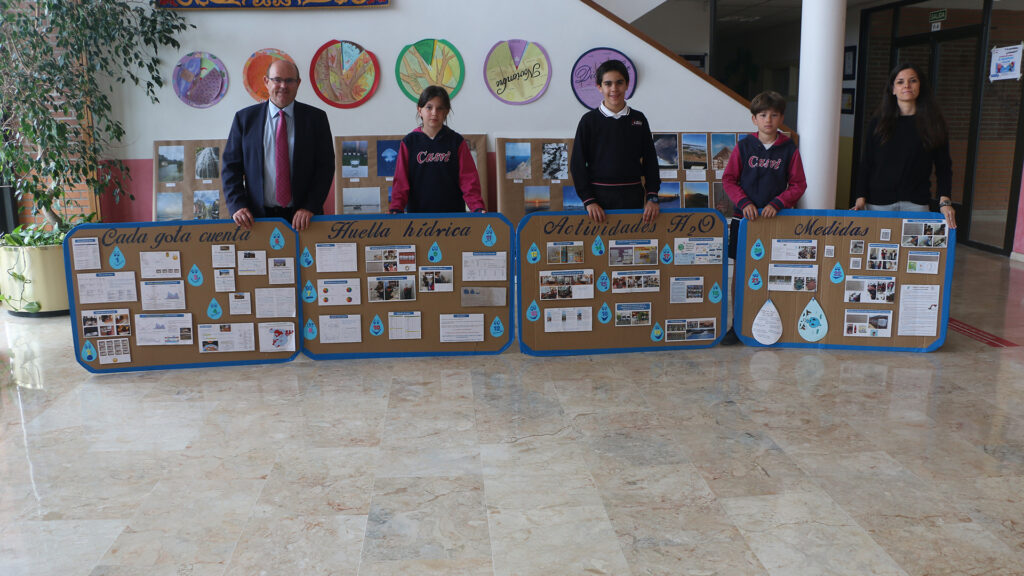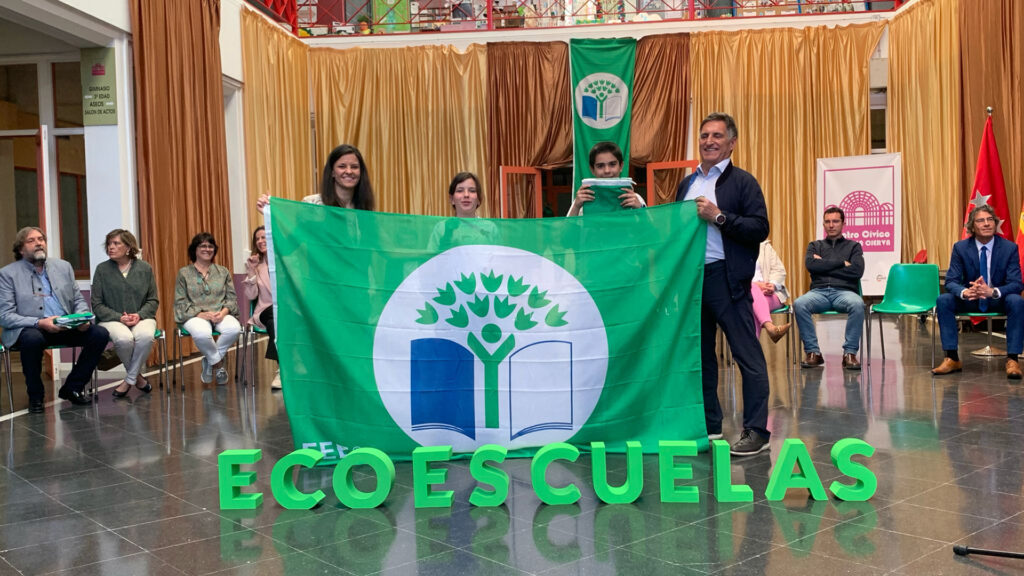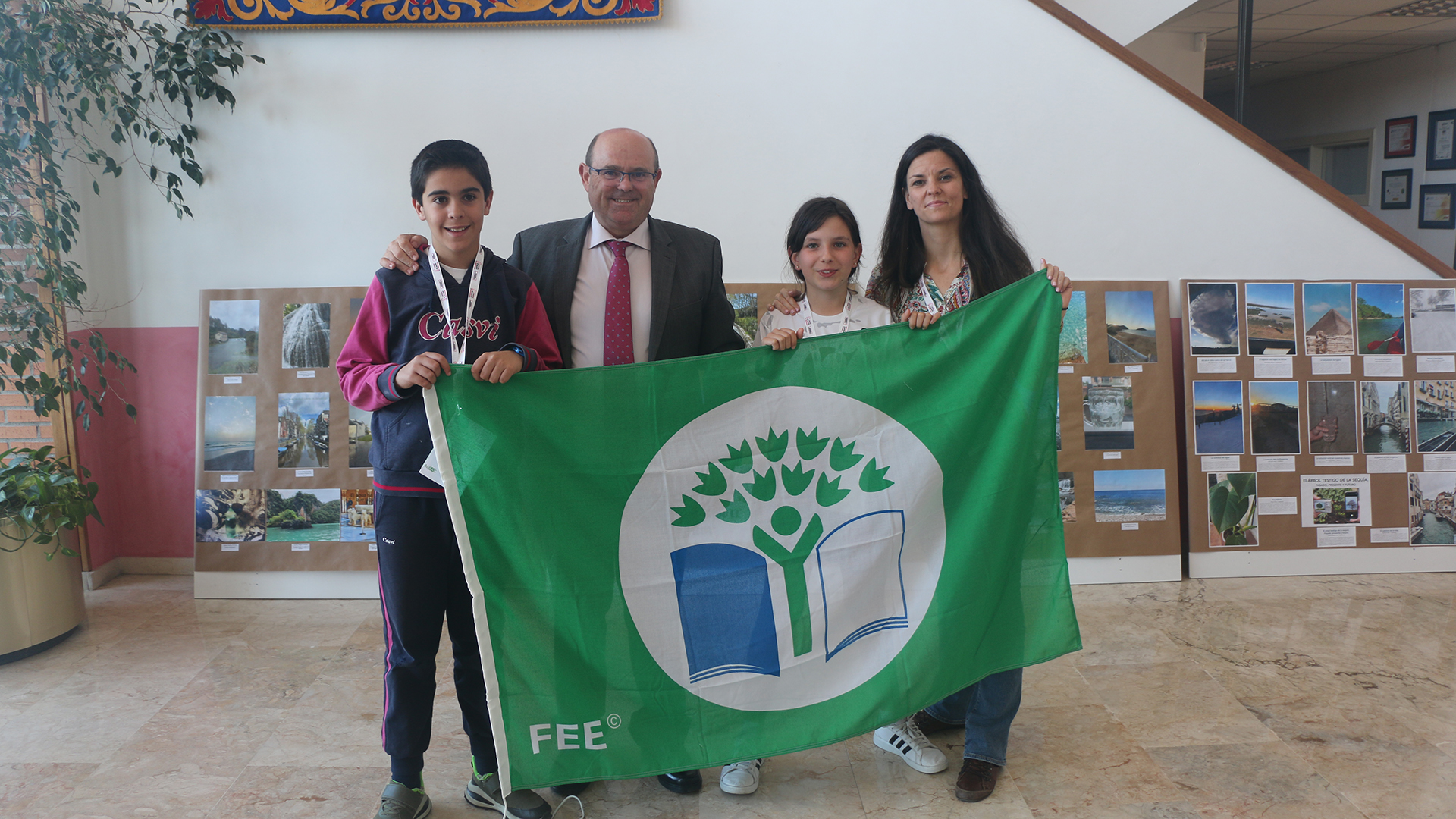Last week, our school renewed the Green Flag of the Ecoescuelas program, which recognizes schools that follow a specific methodology when working with students and the educational community, focusing on respect for the environment and environmental care.
In addition, within this context, our students have participated in the “Ecoexperiencia para crear conciencia” (Eco-experience to create awareness) Good Environmental Practices Contest, organized by Salud Ambiental en la Escuela (Environmental Health at School). This is the video with which we are participating. Good luck!
The Ecoescuelas program awards a Green Flag to schools that follow a seven-step methodology that consists of creating an environmental committee, conducting an eco-audit, designing an action plan, monitoring and evaluating the plan, developing a code of conduct, linking the program to the curriculum, and informing and communicating the program to the local community.
In this sense, the student body plays a very important role in the project presented to the committee This year’s project is called “Every Drop Counts”, a study that arose from our 2nd grade classmates. Primary in its unit of inquiry on good habits. Based on this concern, an eco-audit was carried out to reflect on water consumption at the center and an action plan was drawn up, including activities to raise awareness of responsible water use.


It was the students themselves who analyzed data on rainfall, temperatures and the situation of reservoirs in Spain. The project involves students in various educational activities, such as studying the water cycle, visiting a water exhibition, and participating in contests and events related to the water theme. In addition, concrete measures are implemented in the school, such as the efficient use of faucets, cisterns and the reuse of water in the dining room and playgrounds.
The project seeks to raise awareness of the importance of water and promote concrete actions for its conservation and sustainable use, implementing concrete measures within the center, such as the efficient use of faucets, cisterns and the reuse of water in the dining room and courtyards.
The students responsible for the project were also in charge of presenting it to the Head of Studies of the school, who decided to share it with the rest of the educational community at the entrance of the school, where it is available for anyone interested in knowing a little more about it.


